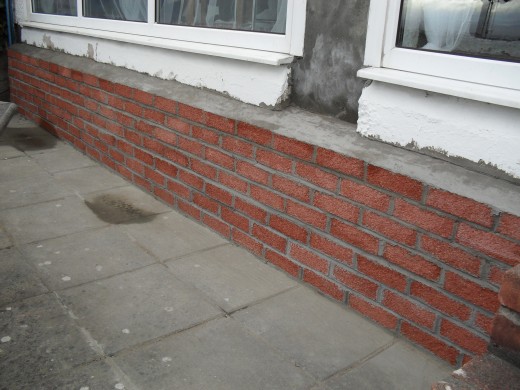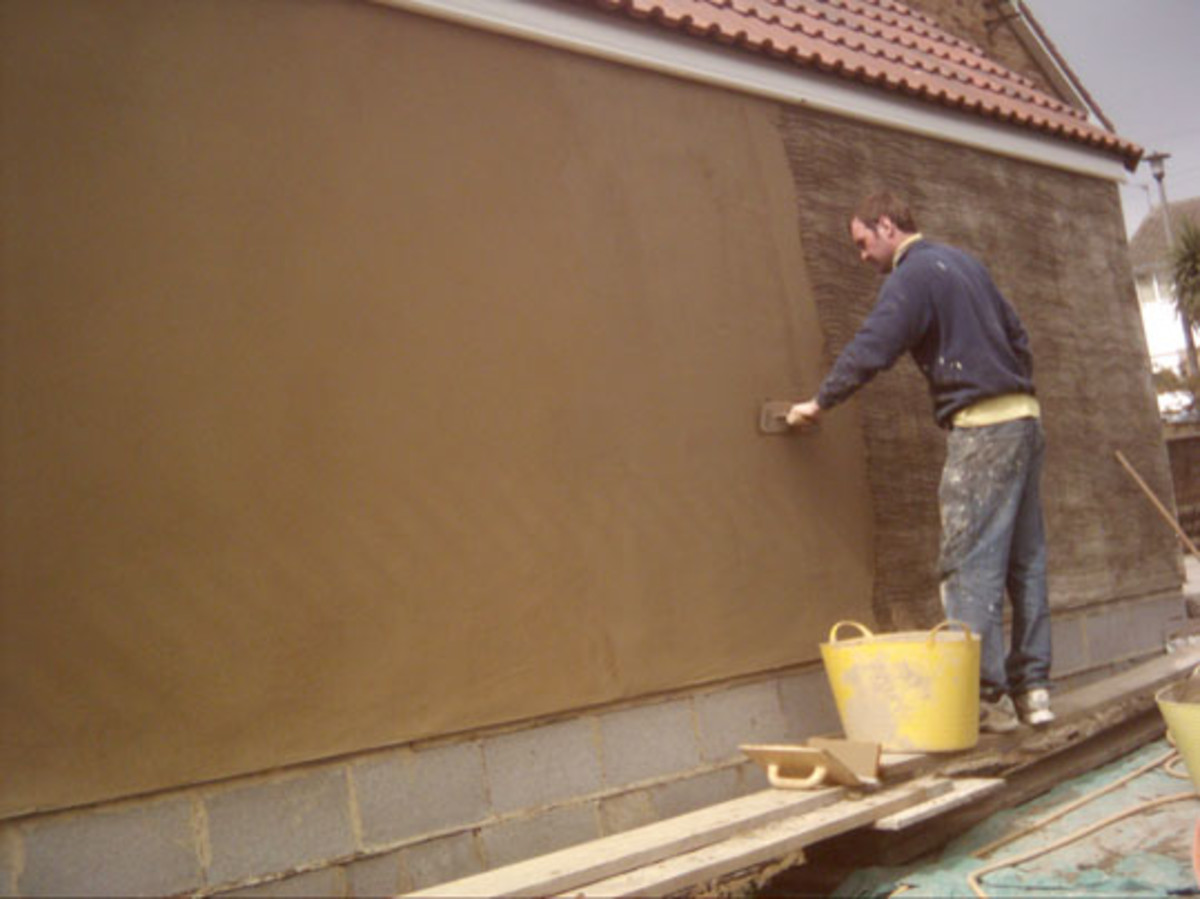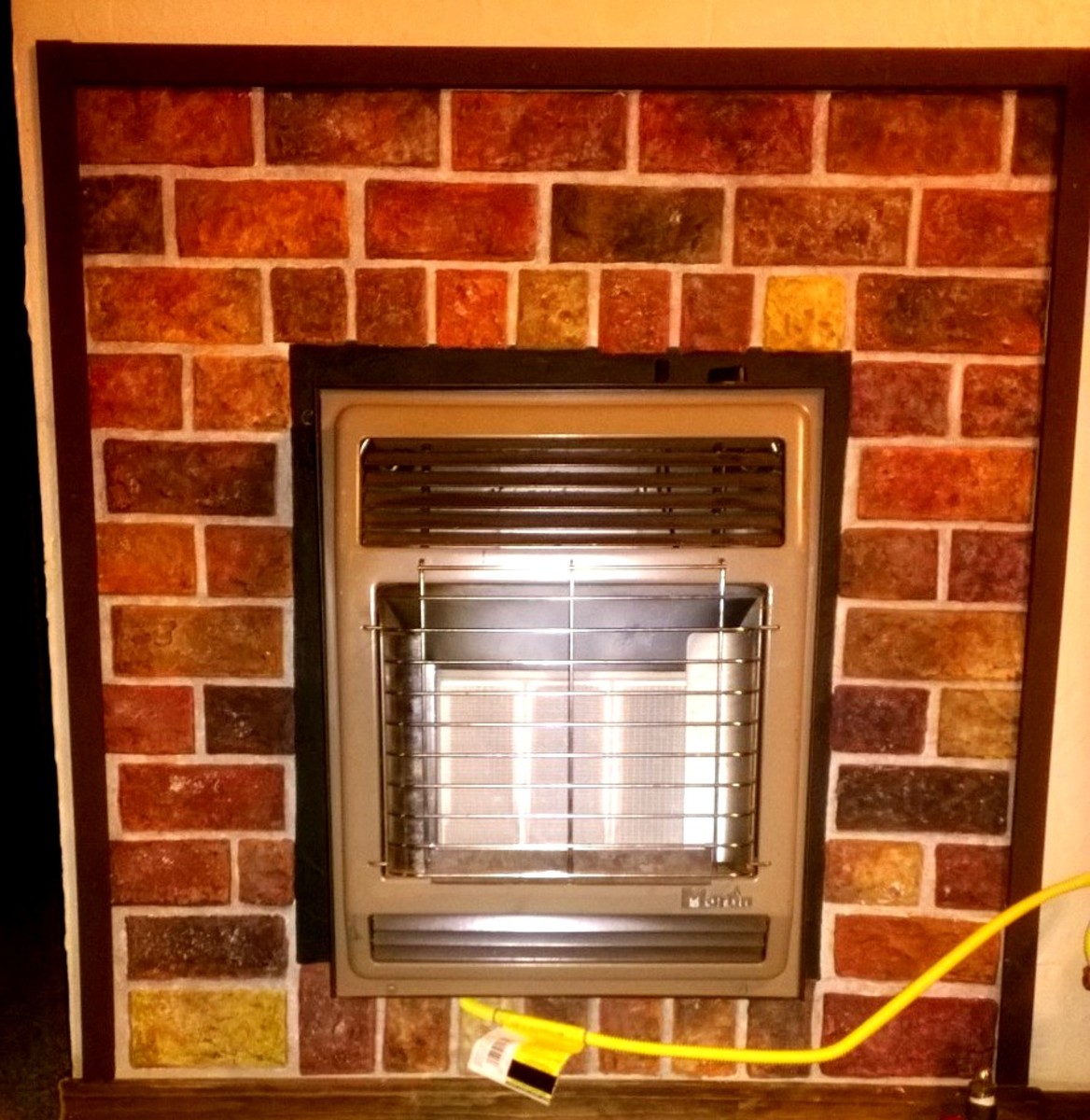Broken wall cladding
Loose cladding
My bungalow was built in 1926 and as far as I know it has never had the pebble - dash exterior renewed. We've lived here for 20 years after buying it when my friend who owned it died. He lived here for many more years than my family.
This year I noticed that some cracks were appearing in the surface of the pebble-dash under my veranda windows. Tapping the surface with a hammer revealed that some of the cladding was hollow-sounding, so there was only one thing for it: take off some of the loose cladding, and if the inner wall was sound, render it over again. The loose bits were soon taken off with a hammer and chisel and a fairly large area of inner brick was exposed. There were no cracks in the inner wall which was a relief as that could have indicated subsistence. The inner wall had been cemented using black mortar which was also coming away from between the bricks, so the wall would have to be reinforced with new cement. If this part of the cladding was loose then probably the rest of it was as well, so I started tapping the whole length of the wall, finding the hollow bits. It was quite extensive, so the only thing to do was to take off all the loose cladding. It took me a few days with a hammer and chisel but eventually all the loose stuff was off and bagged up. I took five sacks of rubble over to the dump.
The inner wall then had to be scraped of loose mortar and new cement applied. I use a mix of three sand to one cement. It's a good, strong mix and one that has always been good over the years
Hard work
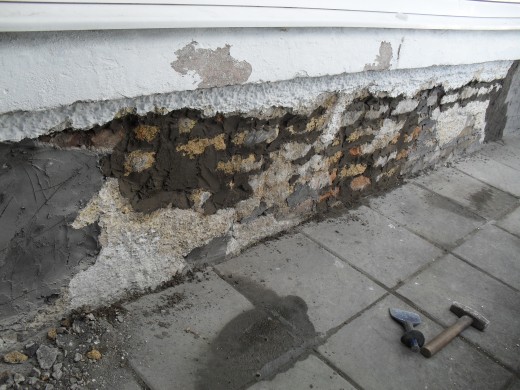
Render
The decision then was: do I render the whole wall with new cement and try to get it flat, or do I lay new bricks in front of the old wall and tie them back to the inner wall? I tried to render a patch first as that would be the cheaper option, but with my replacement shoulder joints crying for mercy, it had to be new bricks. Rendering is coating the whole wall with a thick layer of cement and then flattening it. Heavy and difficult work. Bricklaying is very much lighter and easier to do. I'm not a bricklayer, I'm an engineer, but I've learned a bit over the years, and I enjoy doing it.
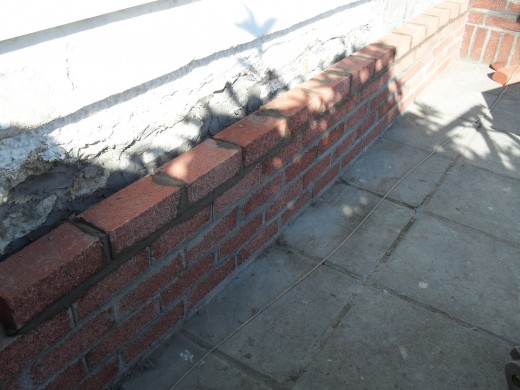
Finished
There was a fairly flat surface to lay the bricks on, so there was no trench and the laying of footings involved.
It took me about a week, working only in the mornings at first. Mixing cement by hand is a heavy job and it took the best part of a week before I was fit enough to work in the afternoons as well. The weather was kind to me and the work progressed. Laying bricks is easy enough if you take your time and make sure everything is flat, level and upright.
Anyway, the job was done and although it's not perfect, it's good enough for an amatuer.
